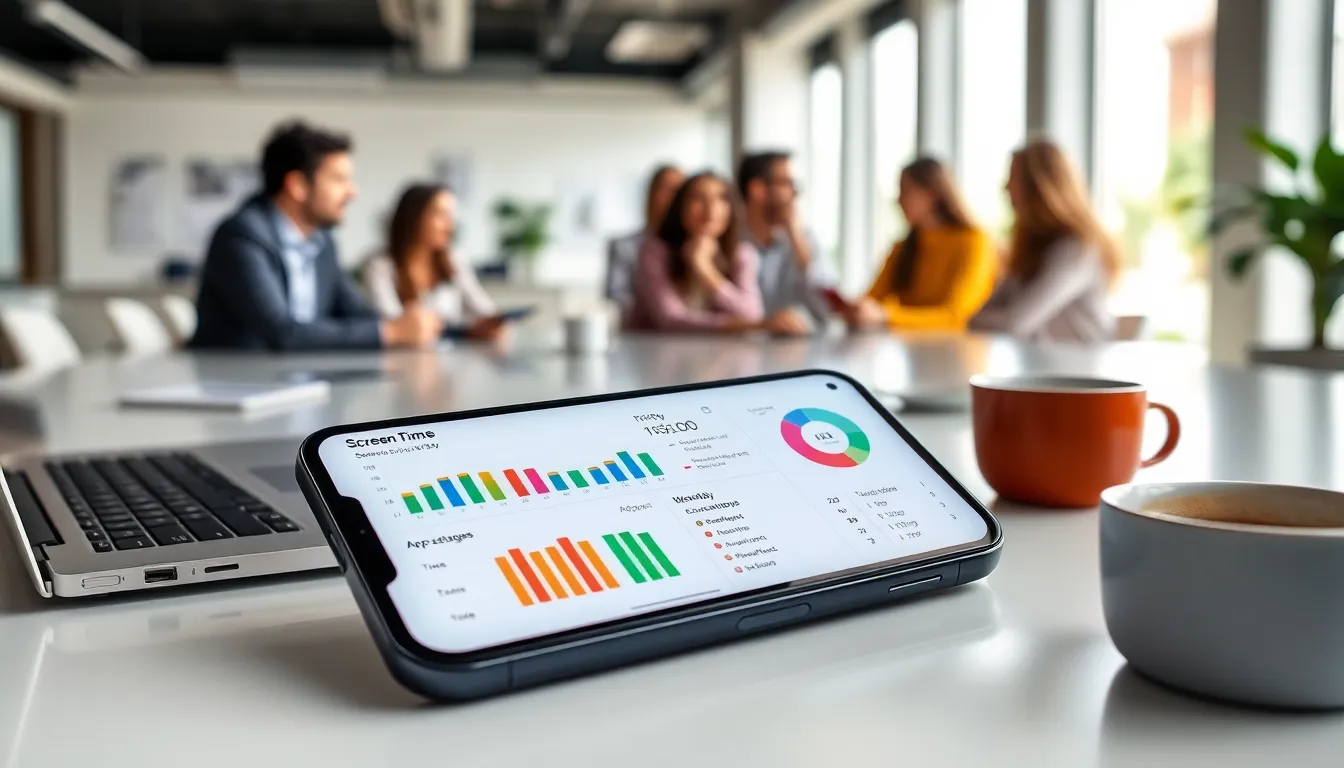Table of Contents
ToggleEver wondered where all that time on your iPhone goes? The app you thought only took 10 minutes? Trust me, it adds up. But don’t stress: the Screen Time feature on iPhones is here to save the day. This nifty tool not only shows how much time is spent on apps but also helps you take back control of your screen habits. Buckle up as we explore how to navigate and leverage these features like a pro.
Understanding Screen Time Features

Screen Time is Apple’s answer to the age-old question, “How much time do I spend staring at my phone?” This feature is designed to provide insights into your phone habits. You can track usage for apps, set limits, and even schedule downtime. It essentially puts you in the driver’s seat about digital consumption.
The dashboard provides a colorful breakdown, showing daily and weekly activity, app categories, and even your most used features. Why does this matter? Understanding your usage can help maintain a healthier relationship with technology. Armed with this knowledge, users can identify time sinks, hello, endless social media scrolling., and make adjustments to promote productivity.
How To Access Screen Time Settings
Accessing the Screen Time settings on an iPhone is straightforward. First things first, you’ll want to unlock that device like it’s a vault holding all your secrets. Here’s the roadmap:
- Open Settings: Locate that gear icon on your home screen: it’s usually the last thing you want to think about when binge-watching.
- Tap on Screen Time: Scroll down, and it should be sitting in the third row, looking all important. Once clicked, you’ll land on the Screen Time overview page.
- Enable Screen Time: If it’s your first time, jumping into this adventure, you might need to enable it. Just follow the prompts, and you’re good to go.
It’s as simple as pie, and we all love pie, unless you’re in a calorie-counting phase. Once inside, users can explore various options and dive deep into each app’s stats.
Reviewing Your Screen Time Data
Now, let’s talk about the fun part: reviewing your screen time data. This is where you face the music. Under the Screen Time section, users will see a summary of app usage over the past week or day. This information can come as a hefty surprise for those who think their phone addiction is under control.
Daily and Weekly Reports
The daily view breaks down usage hour by hour, while the weekly report displays trends over time, could be useful as motivation to cut back. Users can tap on individual apps to see how long they spent on each.
App Categories
Apps are also categorized. Social media, entertainment, productivity: these categories help understand where your time is being consumed. Seeing a glaring red line next to “Social Networking” might hit hard, but it’s the first step to improvement.
Understanding these statistics allows users to identify trouble areas rapidly and make necessary adjustments.
Setting Up App Limits and Downtime
So, you know how much time you spend: now what? It’s time for action. Setting app limits and scheduled downtime can be a game-changer in managing screen time.
App Limits
Want to cut down on those late-night scrolls? App limits can be configured per app category. Tap on “App Limits” under the Screen Time settings, and you’ll be able to set daily time limits for specific types of apps. Once you reach that limit, the app icon will gray out. It’s a polite way of saying, “Enough is enough.”
Downtime
But what if you want a break from screens altogether? Downtime allows you to schedule periods where only certain apps and calls are available. By enabling downtime, users can carve out essential tech-free moments, whether that’s during family dinners or bedtime.
Using Screen Time For Family Sharing
Screen Time isn’t just for individual use: families can harness this feature too. When Family Sharing is set up, parents can monitor their children’s screen time activities from their own devices.
Setting it up is relatively simple: under Family Sharing, invite family members to join and enable Screen Time for each member. Parents can establish app limits, downtime, and even see activity reports directly from their devices. This can reign in habits early on and teaches responsible device usage in a digital age. Plus, it can spark conversations about screen time that could even lead to family game nights, horror films about family bonding, anyone?
Tips For Managing Screen Time Effectively
Now that the heavy lifting is done, here are some quick tips that can help balance screen time and enhance responsibility:
- Set Goals: Establish personal usage goals based on your review. Aim for reducing overall screen time or focusing on more productive apps.
- Be Intentional: When picking up the phone, have a purpose in mind. Need to make a call? Text a friend? Don’t just scroll: multitasking is the key here.
- Use Focus Modes: Leverage Focus modes to silence notifications while working or during personal time. Settings are your best friends.
- Regular Check-Ins: Set a reminder to check your own Screen Time statistics weekly. Seeing steady improvement can be motivating.
- Involve the Family: Discuss app usage openly with family members. Engage them in conversations about screen time and involve them in decision-making about limits.








